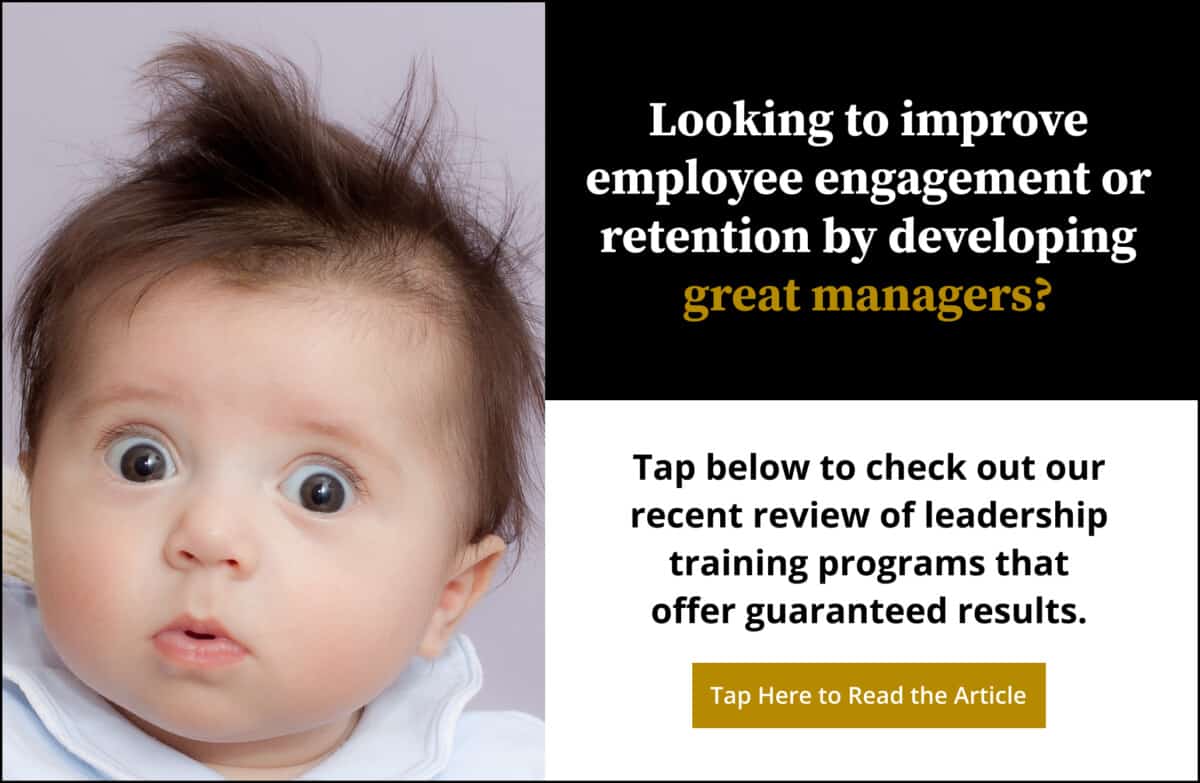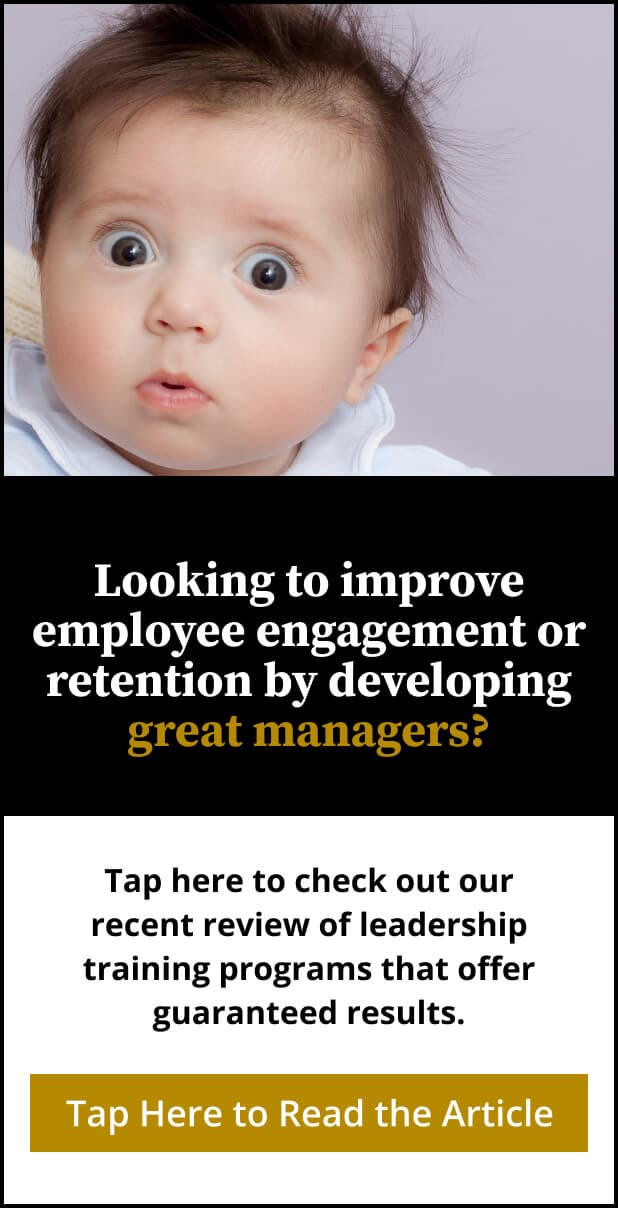Share:
Muriel Call, Staff Writer

Author and marketing expert Sybil F. Stershic says, “The way your employees feel is the way your customers feel. And if your employees don’t feel valued, neither will your customers.”
When employees don’t feel valued, it has a negative impact on customers. It also has a detrimental effect on employee retention, which can negatively impact the bottom line.
According to Gallup, voluntary turnover is costly, but there are many costs associated with high turnover beyond those listed in accounting spreadsheets. High employee turnover not only incurs significant costs for organizations in terms of recruitment and training, but it also leads to a loss of valuable knowledge and skills, as well as cultural DNA.
Understanding the factors that drive better employee retention for different segments of the workforce is of paramount importance in reducing turnover. While there are many factors that can impact turnover, there are six common factors that strongly impact retention.
The top six factors that drive better employee retention are employee engagement, workplace culture, flexibility, growth opportunities, recognition, and leadership.
This article will delve into the impact of turnover, generational differences in employee priorities and how these differences can impact retention, the top six factors that drive better employee retention overall, and some strategy success stories from both the private and public sectors.


The High Cost of Turnover
Employee turnover can have a profound impact on an organization’s culture, employee experience, and profitability.
High turnover rates can disrupt the continuity and cohesion of a team, leading to a decline in morale and productivity. This can, in turn, affect the overall organizational culture, making it less appealing to both current and prospective employees.
From an employee experience perspective, high turnover can create a sense of instability and uncertainty. Employees may question their own job security or the organization’s future, leading to decreased engagement and satisfaction.
To make matters worse, the constant cycle of colleagues leaving and new ones arriving can hinder the development of strong relationships and a sense of community within the workplace.
In terms of profitability, turnover is costly. The costs associated with recruiting, hiring, and training new employees can be substantial. Additionally, when an employee leaves, their knowledge and skills leave with them, resulting in a loss of productivity until a replacement can be fully onboarded.
According to a study by the Society for Human Resource Management (SHRM), organizations may have to invest an amount equivalent to six to nine months of an employee’s salary to locate and educate a replacement.
Effective retention strategies are essential for maintaining a positive organizational culture, enhancing the employee experience, and ensuring the long-term financial health of the organization.
Navigating Generational Differences for Effective Employee Retention

In today’s diverse workforce, employee retention strategies must consider the shifting needs of different generations of workers. Baby Boomers, Generation X, Millennials, and Generation Z each have unique expectations and values that influence their job satisfaction and loyalty.
Baby Boomers and Generation X often value job security and a stable work environment. They appreciate recognition for their experience and dedication.
While these factors still influence younger generations, Millennials and Generation Z, who grew up in the digital age (with Gen Z being digital natives), often prioritize flexibility, purposeful work, and opportunities for growth and learning. They value a work-life balance and a company culture that aligns with their personal values.
Understanding these generational differences is critical for effective employee retention. Companies need to create a flexible and inclusive work environment that caters to the needs of all generations. This could include offering flexible working arrangements, continuous learning opportunities, a strong company culture, and recognition programs.
Addressing shifting generational needs can enhance job satisfaction, improve employee retention, and, ultimately, drive organizational success.
While there are many factors that can influence retention, the top factors that can either drive turnover or improve retention overall are employee engagement, workplace culture, flexibility, growth opportunities, recognition, and leadership.
Employee Engagement
Employee engagement is an employee’s emotional commitment to their work, the organization they work for, and its goals. It describes the bond an employee builds with their specific job and the organization.
An “engaged employee” is defined as one who is fully absorbed by and enthusiastic about their work and so takes positive action to further the organization’s reputation and interests.
The value of employee engagement cannot be overestimated. The benefits include improved business performance, greater employee satisfaction, and lower turnover rates.
Engaged employees are more likely to stay with the organization, reducing the costs associated with hiring and training new employees. They are also more likely to be proactive and solution-oriented, contributing to innovation and problem-solving efforts.
However, fostering employee engagement can be challenging. It requires consistent effort from management to create an environment that promotes engagement. This might include providing meaningful work, offering opportunities for growth, and fostering a positive work culture.
Employee engagement contributes significantly to employee retention. When employees are engaged, they identify with the organization’s mission and are more likely to stay with the company. This sense of loyalty reduces turnover and the costs associated with it.
Success Stories
Business: Tech giant Google has consistently been ranked as one of the best places to work. Google fosters employee engagement through a positive work culture, competitive compensation, and perks like free meals and on-site amenities.
Public Sector: The City of Austin has been recognized for its efforts to improve employee engagement. The city implemented a series of initiatives aimed at increasing engagement, including leadership training and an employee recognition program.
Workplace Culture

Workplace culture refers to the system of shared attitudes, beliefs, priorities, and values within an organization that guides the behaviors of all employees. It’s the collective personality of a company and it plays a crucial role in determining how employees interact with each other and with the organization at large.
Creating and maintaining a positive organizational culture can be challenging. In the business sector, rapid changes, competitive pressures, and diversity can make it difficult to establish a unified culture.
In the public sector, bureaucracy, public scrutiny, and political influences can pose challenges to building a cohesive and effective culture.
Workplace culture significantly impacts all generations. A toxic environment can lead to decreased productivity and high turnover. Younger generations, valuing work-life balance and positive culture, may be particularly sensitive to such environments.
Meeting these challenges is essential for driving better employee retention.
A strong organizational culture can significantly impact employee satisfaction and retention. When employees feel aligned with the culture, they are more likely to be satisfied with their jobs and more likely to stay with the organization.
A positive, inclusive culture can foster a sense of belonging and loyalty, reducing turnover and increasing productivity.
Success Stories
Business: Known for its culture of fun and inclusivity, Southwest Airlines has consistently had lower turnover rates and higher customer satisfaction compared to other airlines.
Public Sector: The City of Rancho Cordova, California, became the first local government organization to be named one of Fortune’s Great Places to Work, a distinction it earned due to its unique workplace culture. The city fosters a flat structure, promoting free idea exchange and creativity.


Flexibility
Flexibility in the workplace is an increasingly important aspect of modern employment. It includes options like remote work, flexible hours, and job sharing, all of which can significantly improve work-life balance for employees.
Flexibility allows employees to better manage their personal and professional lives, leading to improved job satisfaction and productivity. However, implementing flexibility can be challenging.
Businesses may struggle with managing remote workers or fear that flexible hours could lead to decreased productivity. In the public sector, bureaucratic constraints and the need for public accountability can make flexibility difficult to implement.
Despite these challenges, flexibility can greatly improve employee retention. Employees who have the ability to balance their work and personal lives are more likely to remain with their employer. In fact, flexible working arrangements are associated with increased job satisfaction, job performance, and commitment to the organization.
Success Stories
Business: One company that has successfully implemented flexibility is the software company Buffer. They operate fully remotely, allowing their employees to work from anywhere in the world. This has led to high levels of employee satisfaction and retention.
Public Sector: the U.S. Federal Government has made strides in offering flexible work arrangements. Through their telework programs, federal employees can work from home, leading to increased job satisfaction and retention.
Growth Opportunities

Growth opportunities play a pivotal role in employee motivation and retention.
They provide chances for employees to develop their skills, learn new ones, and advance their careers. When employees see a clear path for growth and advancement within the organization, they are more likely to stay.
Employees who feel that they are learning, growing, and advancing in their careers are likely to be more satisfied and motivated. This, in turn, can lead to higher productivity and lower turnover rates.
However, providing growth opportunities can be challenging. In the business sector, it requires a commitment to employee development, which can involve time, resources, and a supportive culture.
In the public sector, bureaucratic and budgetary barriers can make it difficult to provide ample growth opportunities, which can make employees feel like they are at a dead end in their careers.
Success Stories
Business: Salesforce has a robust program for leadership development and regularly promotes from within, leading to high levels of employee satisfaction and retention.
Public Sector: The City of San Antonio, Texas, offers training and mentoring programs, including its Women’s Leadership Mentoring Program (WLMP), for employees. They also have an employee engagement coordinator to keep these values in focus.
Recognition
Recognition is a powerful tool that can significantly impact employee morale and retention. It involves acknowledging and appreciating employees’ efforts and achievements, which can boost their motivation and job satisfaction.
Recognition can have a profound impact on employee morale and retention. When employees feel their opinions are heard, and their work is valued, they are likely to have higher job satisfaction, be more motivated, and, as a result, be more likely to stay with the organization.
A simple thank you or public acknowledgment can go a long way in making employees feel appreciated.
However, implementing effective recognition programs can be challenging. In the business sector, it requires a culture that values recognition and managers who are committed to acknowledging their team’s efforts.
Due to the limited availability of resources, recognizing and appreciating the hard work of employees and involving them in major decision-making processes can be a daunting task in the public sector. It requires careful planning and creative approaches to ensure that employees feel valued and heard, despite the constraints of the organization’s resources.
Success Stories
Business: FullContact has a peer-to-peer recognition program where employees can reward their colleagues for their hard work using points that can be redeemed for gift cards.
Public Sector: The City of Fayetteville, North Carolina, has a staff-led employee recognition program called Core Values Awards. The awards are presented at a ceremony and recorded for public viewing on YouTube and the city’s website to raise public awareness about the great work the city staff does.
Leadership

Leadership plays a crucial role in employee retention. Effective leaders can create a positive and supportive work environment, which can significantly improve employee satisfaction and retention.
Effective leaders inspire and motivate their teams, fostering a sense of belonging and commitment. They communicate clearly, set realistic goals, and provide constructive feedback. By doing so, they can enhance job satisfaction and productivity, thereby improving retention rates.
However, leadership can be challenging. In the business sector, leaders must balance the needs of the organization with those of their employees, all while navigating a rapidly changing business landscape.
Leadership can be just as challenging, if not more so, in the public sector.
Leaders in the public sector are often tasked with the responsibility of managing complex and diverse organizations that serve the interests of the public. However, these leaders have to navigate various challenges that can make effective leadership difficult, such as public scrutiny, political pressures, budget constraints, and changing regulations.
Public leaders are expected to make decisions that are in the best interest of the public while also balancing the needs of various stakeholders, such as elected officials, interest groups, and constituents.
This can create a challenging environment that requires leaders to be highly skilled in communication, negotiation, and decision-making, among other qualities.
Additionally, public leaders often have to work with limited resources, which can further complicate the task of achieving their goals and serving the public interest.
Success Stories
Business: Since taking over as Microsoft’s CEO, Satya Nadella has fostered a culture of innovation and inclusivity at Microsoft, leading to high levels of employee satisfaction and retention.
Public Sector: New Zealand’s Prime Minister Jacinda Ardern has often been cited as an effective leader. Her empathetic and decisive leadership style earned her high approval ratings, and she was credited with fostering a positive work environment within her administration.

Muriel Call
Staff Writer / Editor


